EBR charges a service fee to manufacturers to produce ebike reviews and videos, this began in 2018. It’s the same flat fee for each bike, and it helps us to keep the site going while limiting ad clutter. We appreciate the opportunity to serve you with our opinions and data but respect your right to know that we receive compensation :)
CUBE is a German bicycle manufacturer with a wide range of electric bike products, recently made available in North America through a tight network of leading dealers. I consider them one of the higher quality brands but noticed that they tend to price a bit lower than competitors like Haibike and Bulls. CUBE works exclusively with Bosch, at the time of this review, and builds each model in a wide range of sizes, for improved fit. One thing that really stands out about the Reaction Hybrid Pro 500 is that depending on the frame size you get, the wheel size will be 27.5″ or 29″. I think the idea here is larger wheels are beneficial to people who can mount and stand over taller frames, but may be an obstacle for petite riders. I appreciate the higher air volume of 29ers for increased comfort, the lower attack angle for spanning cracks and smoothing out bumps and rocks, and the increased rolling momentum… but these are already 2.6″ plus sized tires, so you’re getting traction and air volume benefits even with the 27.5″ wheel. CUBE chose Schwalbe Smart Sam tires with puncture resistant layers to minimize flats, and they’ve designed a dual-layer skid plate to protect the motor casing from rock and log strikes. This ebike is minimalist in some ways, but full of potential for upgrades and crossover use. Notice the bottle cage bosses on the seat tube and the rack bosses on the seat stays. I love how clean the frame looks! Internally routed cables stay out of the way and large grommets allow for easier service. I was told that the seat tube is pre-routed for a seat post dropper if you want to add that aftermarket. Most of the components and hardware is black, including the fork lowers, rims, seat post, stem, and handlebar. Silver highlights on the spokes, disc brake rotors, and suspension fork stanchions look nice here. The fork is one area where compromises were made to keep the cost down. This is a spring for without anodized stanchions. It weighs more, isn’t as adjustable, and probably doesn’t slide as easily as a nicer fork… but at least it has the 15mm thru axle and supports wider Boost hub spacing for a sturdy wider spoke bracing angle. The bike comes with a slower, but lighter and smaller, Bosch 2 amp battery charger vs. their 4 amp, but you could always use the faster charger if you already own one for another bike.
Bosch offers three Performance Line motors at the time of this review and they all produce a bit of electronic whirring noise, use energy faster, and produce some reduction-gearing drag compared to the Active Line motors (and many competing products). CUBE does sell some products with the Active Line Plus, but it’s not as powerful as the Performance Line used here. What you get in exchange is higher torque output, up to 75 Newton meters in this case, and high-speed pedal support. As someone who enjoys spinning quickly (pedaling fast) it’s nice that the Bosch Performance Line CX motor can keep up and won’t fade out. In practice, it means that you don’t have to shift as frequently to hit and maintain higher speeds. Imagine that you’re pedaling towards a hill and begin downshifting in anticipation, to make climbing easier, the motor will simply spin faster without dropping support as you make this shift… as long as you’re at or below the 32km/h supported max speed. The Bosch motor controller, which measures rear wheel speed, pedal cadence, and pedal torque 1,000+ times per second, has a built in sensor that listens for shifting and reduces pressure automatically when you change gears. Given the mid-level Shimano Deore drivetrain with ten gears, you may be shifting frequently. I love the Shimano trigger shifter interface on the Reaction Hybrid Pro because you can pull in or push out for higher gears and do a three-step downshift for lower gears if you want. The gear spread on the cassette is 11 to 42 tooth, which is a step up from the default 11 to 36 tooth cassettes I see on most Class 1 & 2 products. This balances with the slightly smaller 15-tooth chainring (38 tooth traditional chainring equivalent). I was able to accelerate quickly on the gravel trails near Langley, BC Canada and have used similar bikes to climb very steep hills without issue. Do note however, that it’s important to be in the correct gear to really empower the motor for climbing. Mid-motors like this are extremely efficient when paired with a good drivetrain and skilled rider who shifts appropriately. Even though part of me would like to see a Deore XT derailleur here instead of just Deore, it’s great that CUBE opted for the Shadow Plus version, which brings the derailleur closer to the wheel to avoid rock strikes, and also added the one-way clutch. There’s a small grey lever on the front edge of the derailleur housing that tightens the chain for high-speed riding and bumpy off-road use, to keep the chain from bouncing and dropping. As a second layer of protection, the right chain stay has a long rubber slap guard to reduce noise and frame dings. Depending on the frame size you choose, the pedal crank arms will differ, ranging from 170mm to 175mm to maximize pedal comfort and efficiency. The longer arms provide leverage but hang lower, increasing potential for pedal strikes if you don’t have tall enough wheels… they did a great job setting this thing up and thinking these details through. As a final note, the chainring has a nice alloy guard to keep the chain on track and protect your pant ends from snagging or rubbing on the dirty chain. I have heard that in some very muddy conditions, the chain can get sucked upwards (this is called chain suck) but that may not be as much of an issue here because of the clutch described earlier :)
Powering the CUBE Reaction Hybrid Pro 500… is a high-capacity Bosch PowerPack 500! This battery offering 36 volts and 13.4 amp hours for nearly 500 watt hours of capacity, which I’d call average for the current generation of electric bikes. It’s one of the most widespread electric bike battery designs in the world right now and uses the same form factor and mounting interface as the older, lower capacity, Bosch PowerPack 400. This means that finding replacements, borrowing additional packs, or renting packs when traveling, becomes much easier. The plastic casing is durable but lightweight, especially compared to the new PowerTube 500, which weighs ~6.2 lbs verses ~5.7 lbs. PowerPack batteries do stand out a bit visually because they mount on top of the frame tubing, but CUBE has done their best to sink the battery down a bit and wrap the lower portion of tubing around to help it blend in and add protection. Even though the downtube is a bit wider this way, I did not have an issue with foot strikes or discomfort when pedaling as I have with some less refined electric bicycles that have larger wider tubes. Anyway, the pack clicks down and secures with a high quality locking core. You can mount the battery without using the keyed lock, just be sure to push down until you hear it click. CUBE dealers (and really any Bosch certified ebike dealer) can help you adjust the mounting interface over time if you notice rattling or loosening, it’s a sturdy, long-lasting, proven design. And, that goes for the charger as well. With half a kilowatt-hour of capacity in this battery, the faster 4-amp Bosch charger would have been nice, but CUBE opted for the compact 2 amp charger for cost savings. The upside is that it won’t take up as much space in a backpack or add as much weight, but charging can take a bit longer. The first half of the battery fills much faster than the second, so you can get more than 50% in just a couple of hours usually. I like the wide proprietary plug design of this charger, which isn’t likely to be mixed up with other chargers or get broken as easily. You can charge this battery on or off the bike frame, making it great for commuters who need to charge inside at work, and you won’t be as likely to drop the battery during transport because it has a big plastic loop handle at the top. To maximize the life of this and most Lithium-ion batteries, try to keep it above 20% capacity and avoid extreme heat and cold. I mentioned commuters there, because of the rack bosses. As someone who can only really afford and have space for one ebike, I view cross country models like this as a great way to commute during the week and have some fun on the weekends.
Activating the drive systems on this ebike is fairly straightforward. You charge and mount the battery then press the power button on the top edge of the little display panel, which is mounted within reach of the left grip. This is the Bosch Purion display, one of the nicer compact offerings on the market right now. It cannot be swiveled to reduce glare easily, is not removable for protection, does not show as many menus, and does not have an active Micro-USB charging port like the larger Bosch Intuvia display. However, it does keep the handlebars open, and may not get damaged as easily if the bike tips (no kickstand here) or is parked at a crowded rack. This is a very popular display panel for electric mountain bikes, which often strive for stealthiness to fly “below the radar” visually. I have grown to accept the Purion, but do have a few tips for use… The + and – buttons, which raise and lower assistance, are designed to click in at an angle towards the right. They are attached near the left edge of the control pad and pivot in towards the LCD. With practice, I have found that the right edge is really the sweet spot for consistent pressing and I’ve noticed that sometimes the lower left and middle can be inconsistent or non responsive. The screen itself glows faint white at all times, which shouldn’t draw much power, and is handy when it’s early morning or later at night and you need to read it. Once you get the hang of things, you really don’t have to look down at all, because you can feel and hear the clicks of the button pad. Holding the + button will turn lights on and off if you have a shop wire them in. This will of course cost extra, but it’s nice to know that it’s possible and fairly easy to do (from what I’m told by many electric bike shops around the US). Holding the – button will cycle through trip distance, odometer, assist level, and range. And, the range menu is dynamic, so you can see the bike calculate how far it thinks you can go before the battery completely drains based on the last mile of riding, your current state of charge, and the chosen level of assist. This helps to make up for the very basic 5-bar charge indicator on the left side of the battery and the display which isn’t as precise as a 10-bar or percentage readout seen on some competing displays. On the lower edge of the control pad is a walk-mode button. Press it once and then hold the + button to have the motor slowly assist you when walking the bike (you must be in Eco, Tour, Sport, or Boost for walk mode to work). It’s useful for crowded non-bikeable areas, or if you get a flat tire, and not all companies have it enabled, so props to CUBE.
In so many ways, I’m impressed with the compromises that CUBE made to keep the Reaction Hybrid Pro affordable and using high-end components and drive systems. The 180mm Shimano hydraulic disc brakes work very well, you’re getting the premium Bosch motor and battery… and I actually prefer the PowerPack for weight savings over the PowerTube. The big compromise here is with the cheap fork and basic charger. In some ways, this ebike is not that affordable… but I suspect that has to do with Canadian and US conversions (since this review was filmed in Canada). Only a handful of shops actually carry CUBE in North America right now, but they are all leaders with good service. It’s not every day that you find an electric bike with two wheel size options, but it’s done well here, and it makes sense. I feel like the drive systems blend in, and even though the motor produces a bit more noise than some others, it really drives well in eMTB mode. The power is great and the responsiveness makes it trustworthy on loose gravel, as we had in Canada. I could see myself buying this model for a wide range of uses and having it be my one ebike… especially if I was at college or had limited space in an apartment. I think it looks beautiful, it’s actually one of my favorite looking electric cross country models right now. Big thanks to CUBE and Cit-E-Cycles for partnering with me on this review. We had a blast doing back to back videos and sort of comparing different drive systems. As always, your comments, feedback, and corrections are welcome below, and you can also engage with photos and make friends in the CUBE electric bike forums here.
Pros:
- Excellent weight distribution: the motor and battery are positioned low and center for improved handling, the PowerPack 500 battery is one of the lightest designs on the market for its capacity
- Beautiful motor integration: it’s tipped up and blended into the downtube with a dual-layer plastic skid plate for protection from rock and log strikes
- Available in six frame sizes! CUBE is a large German ebike brand with a wide range of models and most of them are sold in a range of sizes that mean better fit for small and large riders alike, the two smaller frame sizes (16, 17) come with 27.5″ wheels and the four larger (18, 19, 21, 23) come with 29″ wheels
- The battery pack mounting interface is sunk into the downtube, which adds physical protection and aesthetic appeal, it also lowers the weight distribution and frees up the top tube for easier lifting and mounting on some hang-style bike racks
- Sturdy 15mm thru axle on the front wheel reduces flex and provides more responsive steering, note that the wheels use reinforcement eyelets for durability and reduced rim cracking potential
- The front wheel uses a wider Boost hub spacing (110mm vs. 100mm) and this provides a sturdier bracing angle for the spokes and width for a plus sized 2.6″ wide tire, the Schwalbe Smart Sam is a high quality tire with puncture resistance
- The all-black frame looks incredible, Bosch motor and battery casings are almost always black… so they blend in nicely, the fork, crank arms, seat post, stem, handlebar, and rims are also black, and all of the shifter, brake, and electrical wires are internally routed to look good
- The plus sized tires, with the possibility of having 29er wheel size, means more air volume and more comfort, the larger 30.9mm seat post size allows for the installation of an aftermarket dropper post or seat post suspension for approachability and comfort… note that you may need a shim adapter for some posts to fit properly… apparently the frame is pre-routed for an internally wired dropper post
- CUBE only sells through dealers at this point, and this strategy allows them to provide the best quality control, assembly, and fitting… but their dealer network is somewhat limited in North America at the moment
- The smaller Bosch chainring makes chain slap more common than with a standard sized chainring but the Shimano Deore derailleur minimizes this when you click the one-way clutch into the up position, tightening the springs to reduce chain bounce, I feel that the 11-42 tooth cassette offers a great range of pedal options for climbing or hitting higher speeds on descent
- The battery is easy and safe to handle when off of the bike because it has a molded plastic handle at the top, it locks securely to the frame and is backwards compatible with the PowerPack 400
- There is plenty of space below the top tube, in front of the seat tube, and on top of the downtube to mount accessories… I love that CUBE included a pair of bottle cage bosses on the Reaction Hybrid Pro 500
- The seat stays both have threaded eyelets for adding a disc brake compatible rear rack, this could transform the bike from being a weekend trail rider into a daily commuter
- Good 180mm hydraulic disc brakes from Shimano provide stopping power and control for cross country riding, I’m glad that both disc brake rotors are 180mm vs. a 160mm in the back like some down specced bikes
- The Bosch CX motor controller is extremely smart and consistent, it measures rear wheel speed, pedal cadence, and pedal torque over 1,000 per second while also listening for pressure changes from shifting and then easing off, this protects the drivetrain a bit from mashing
- I believe that ABUS makes the locking core that secures the battery cover, it comes with a code for ordering additional keys or getting keyed-alike accessories such as folding locks
- The display is compact, it won’t get damaged as easily in the event of a crash but is still fairly readable with large readouts, for such a stealthy electric bike with integrated battery, the Purion display matches the understated look
- The bike has walk mode enabled, which is especially useful if you encounter a technical bit of trail that you aren’t comfortable riding or maybe you get a flat tire, considering that the bike weighs ~53 lbs, it’s nice to get help moving it along
- I really like the eMTB drive mode, it was designed by Bosch with help from professional mountain bikers who dialed it in so the power isn’t overwhelming but also doesn’t let you down… it’s a great “all around” assist level to use so you can focus on shifting gears, it’s especially nice to have with the Bosch Purion display panel because I have found that the buttons aren’t as consistent (press near the right edge, near the LCD display, because they pivot in vs. going straight down)
- Another feature of the Bosch Performance Line motors that I really appreciate is how they can support higher pedal rates without fading out, you can reach 120 RPM (pedal strokes per minute) and the motor is still there for you, this means you don’t have to shift gears as frequently if you prefer to spin instead of lumber along with increased pedal force
- The quick release rear wheel and removable battery pack make this an easy bike to lift, transport, service on the trail, and park securely
- Excellent two year warranty covers everything on the bike, including the motor, battery, and display system (the frame gets 5 years of coverage), and the select dealers tend to be very supportive and responsive because they are hand picked by CUBE
Cons:
- CUBE doesn’t include pedals with most of their bikes, it’s a minor aftermarket cost and some shops will toss them in… but it’s worth mentioning, I’d probably opt for a Wellgo magnesium platform like this for myself
- The suspension fork uses a coil spring vs. air, so it weighs a bit more and isn’t as adjustable… this might have been a cost savings decision, but at least it has lockout and preload adjust and you could always upgrade to nicer forks later because of the tapered head tube vs. straight, be careful with the little blue plastic lockout cap because it didn’t seem as sturdy as an alloy bolted down cap
- Weighing in at nearly 53lbs for the medium sized frame, this ebike is heavier than I expected… and that may come back to the boost hub spacing, plus sized tires, and spring fork
- The Bosch Performance Line motors are heavier and larger than the Brose S, Shimano E8000, and Yamaha PW-X while also having a wider minimum Q-Factor
- The motor produces more noise than some competing products and uses a reduction gearing system to spin the proprietary chainring 2.5x for each crank revolution, this introduces a bit of drag when pedaling unassisted or beyond the 20 mph top speed
- Standard chainring teeth vs. narrow-wide for increased grab, no chain pulley to raise the chain and reduce chain bounce, but the one-way clutch and rubberized slap guard address this well, small alloy Miranda chairing guard should prevent drops but chain suck could be an issue in extremely muddy conditions
- The Purion display panel looks good and gets the job done, but it isn’t removable and doesn’t have a functional Micro-USB port like the older Intuvia display… I’ve heard that some ebike dealers will upgrade the display for you if you’re willing to pay
- The bike comes with Bosch’s slower compact 2 amp charger vs. the 4 amp, which surprised me given that the battery is their higher capacity PowerPack 500, this must have been a cost savings decision


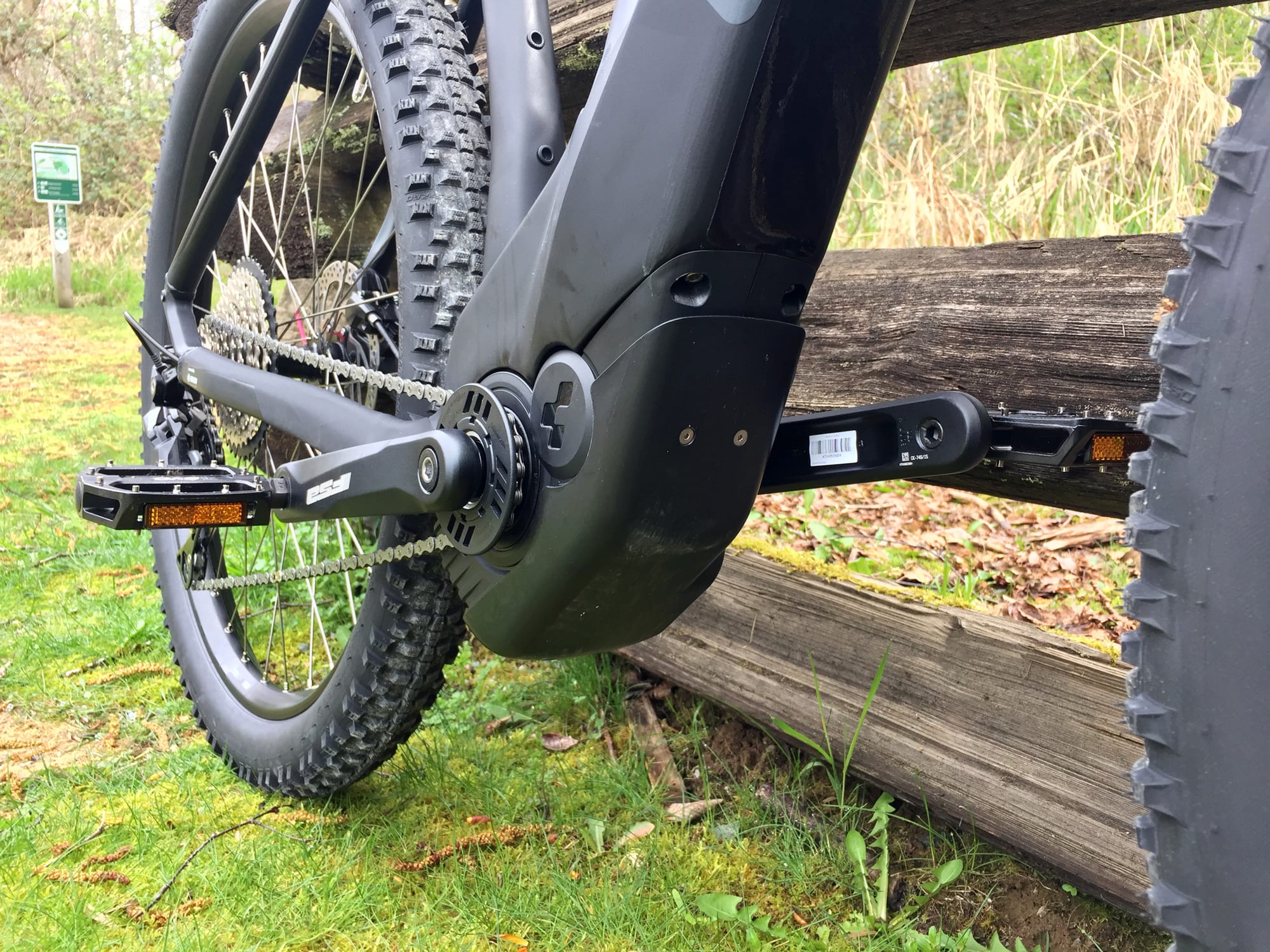
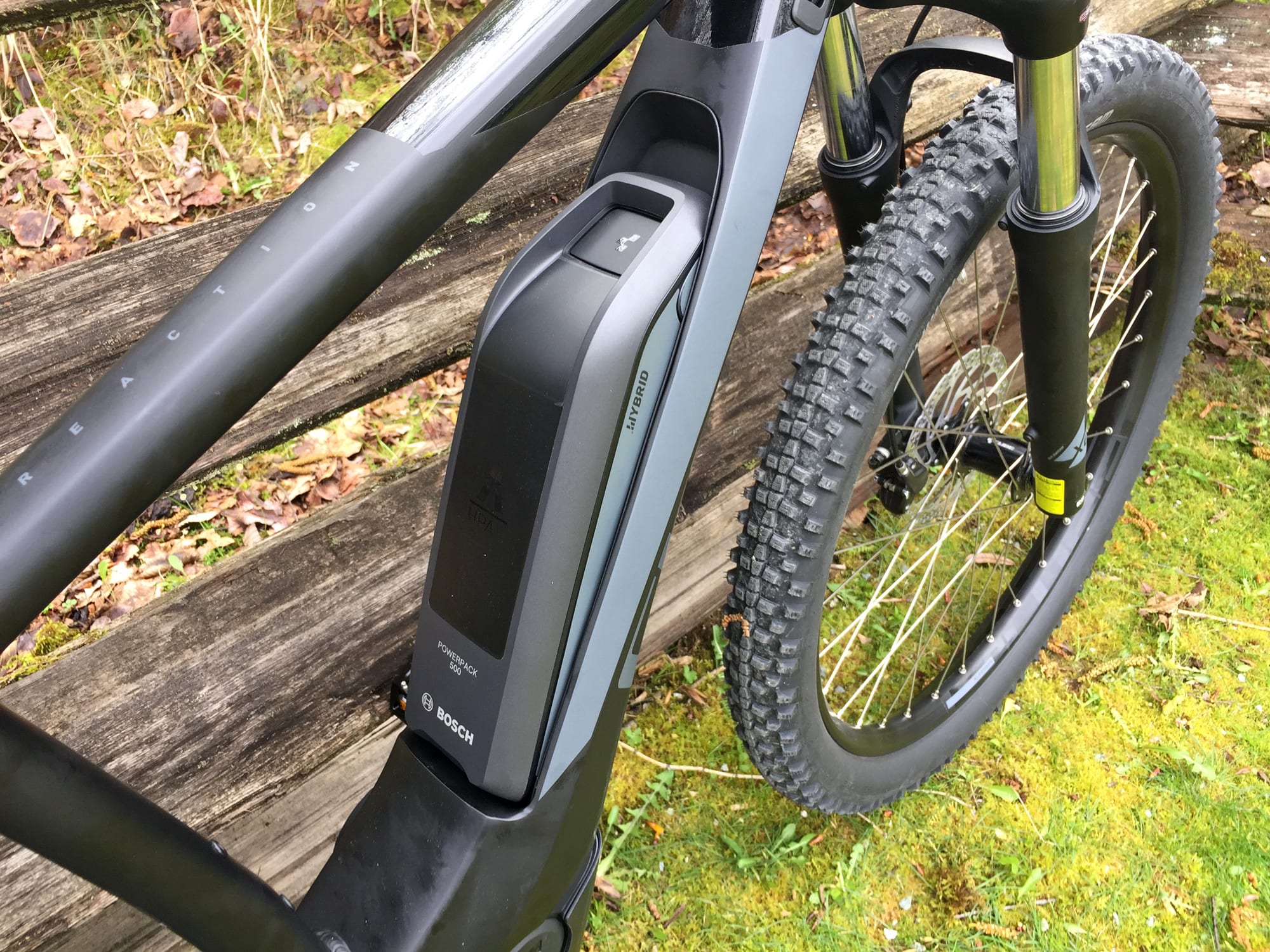
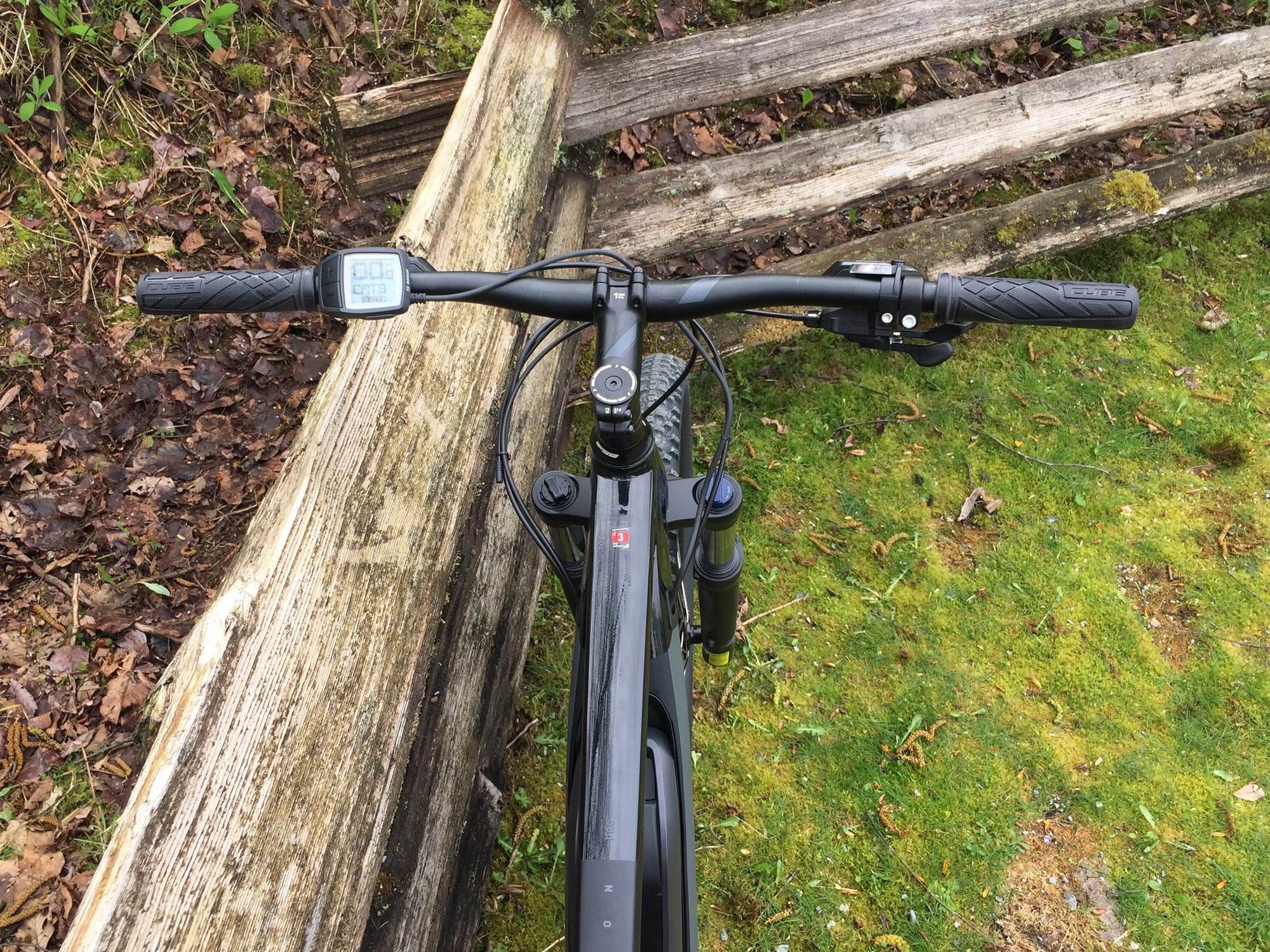
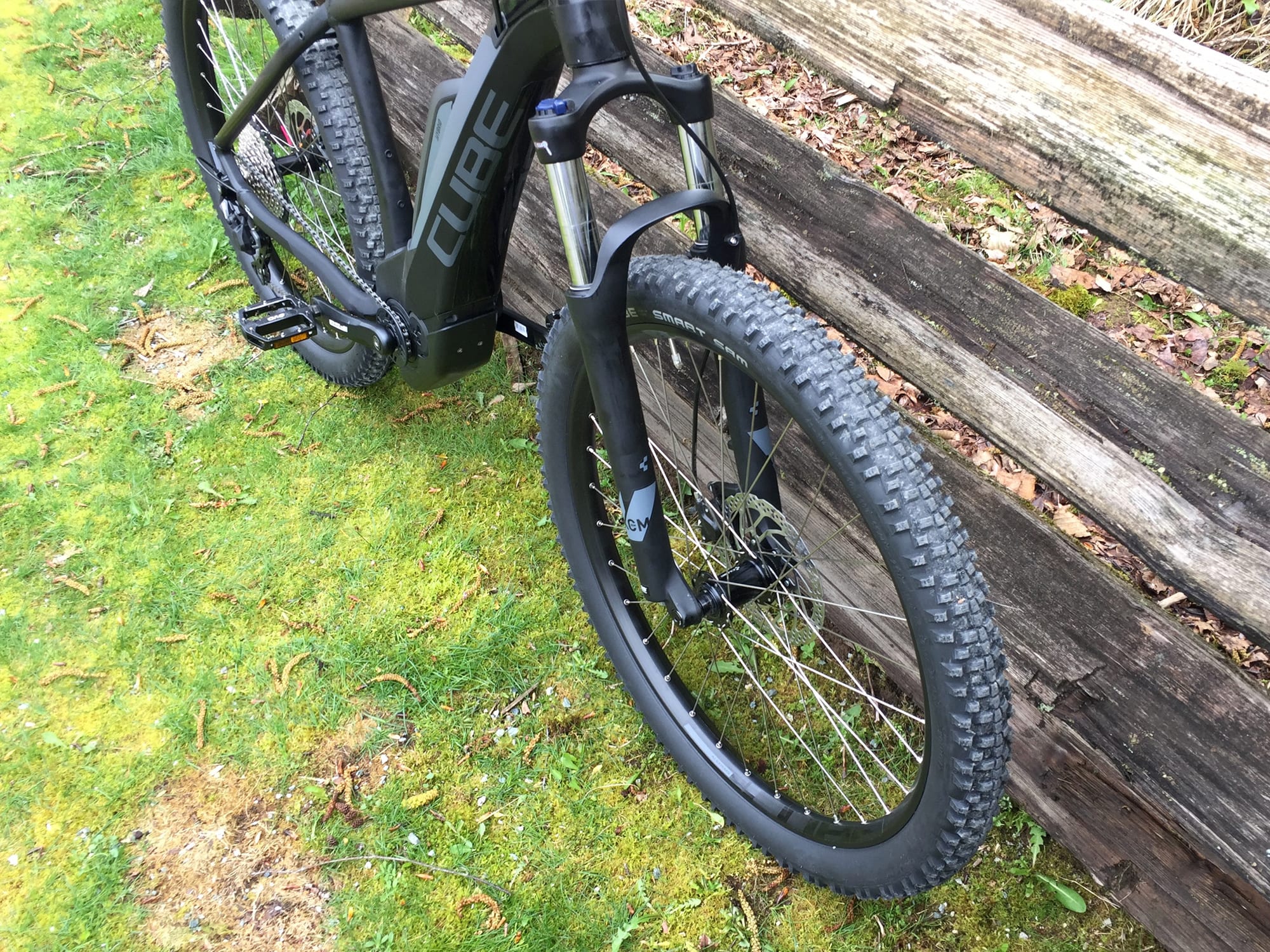
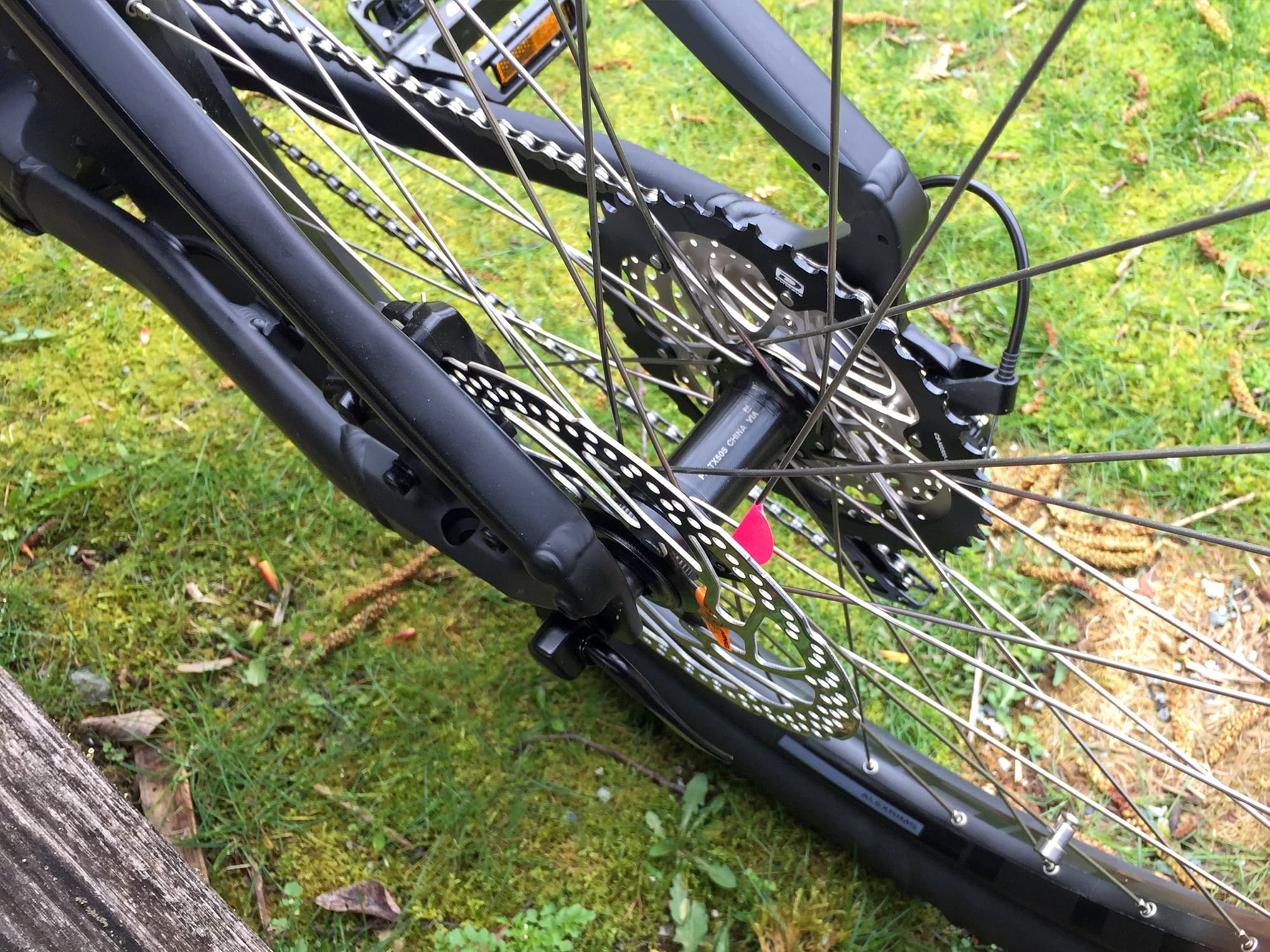
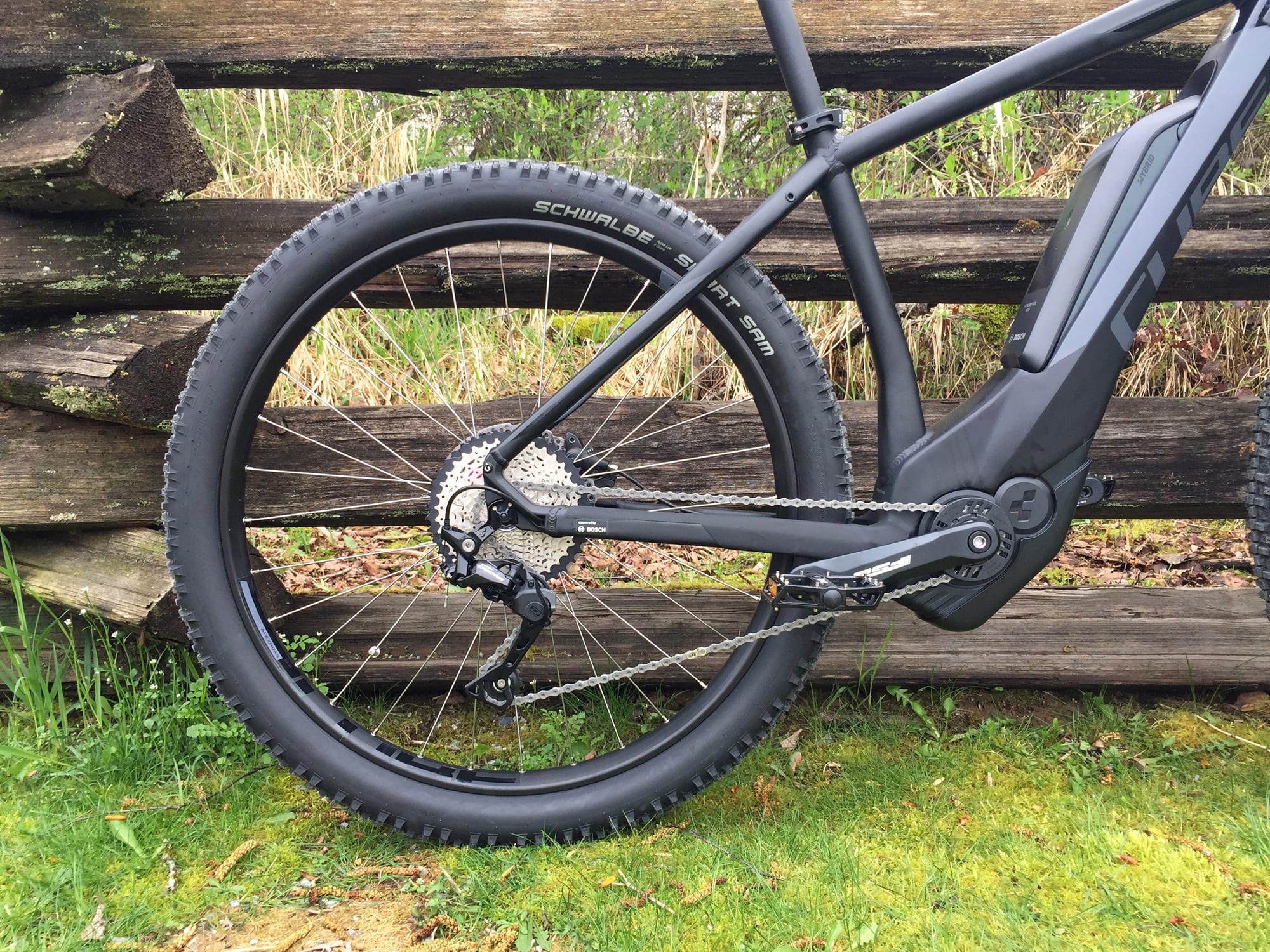


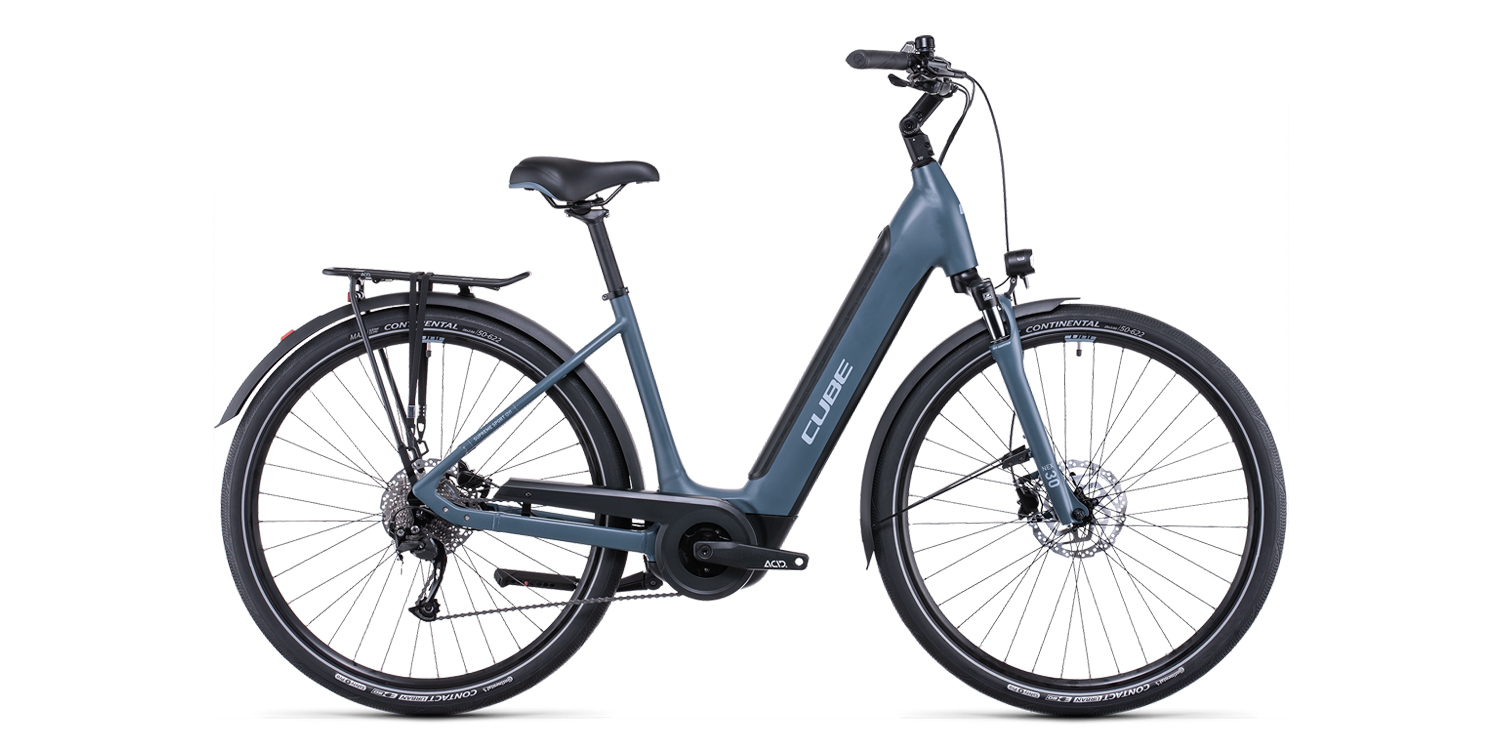
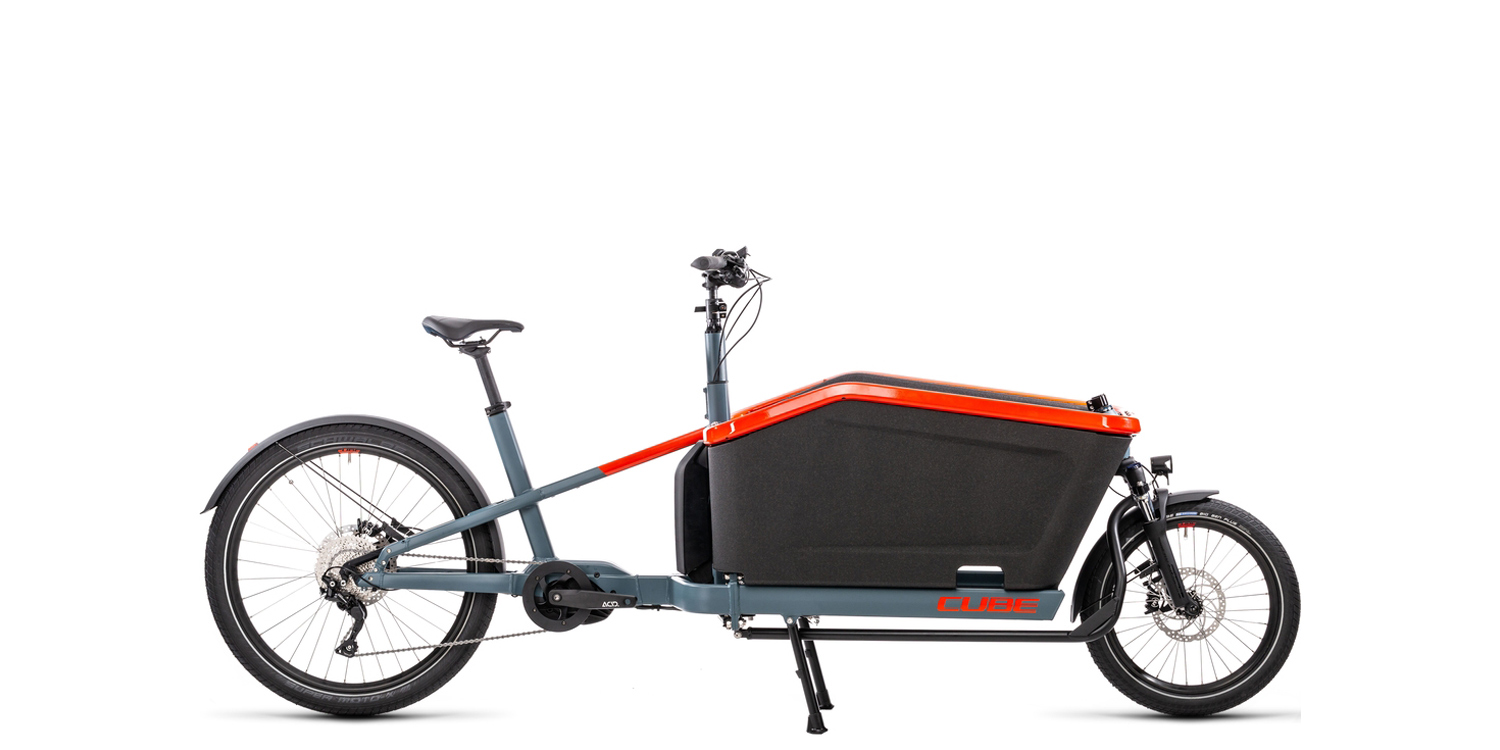

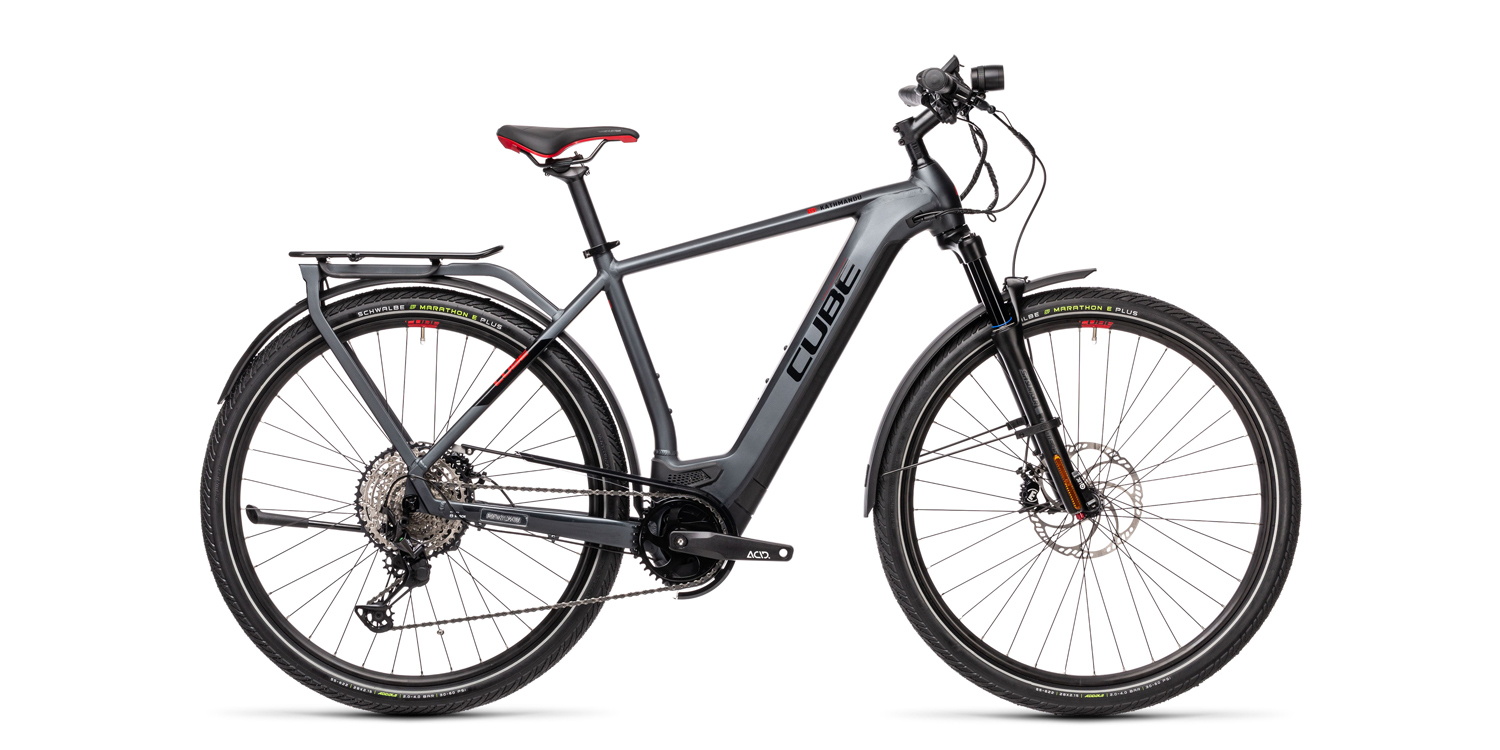
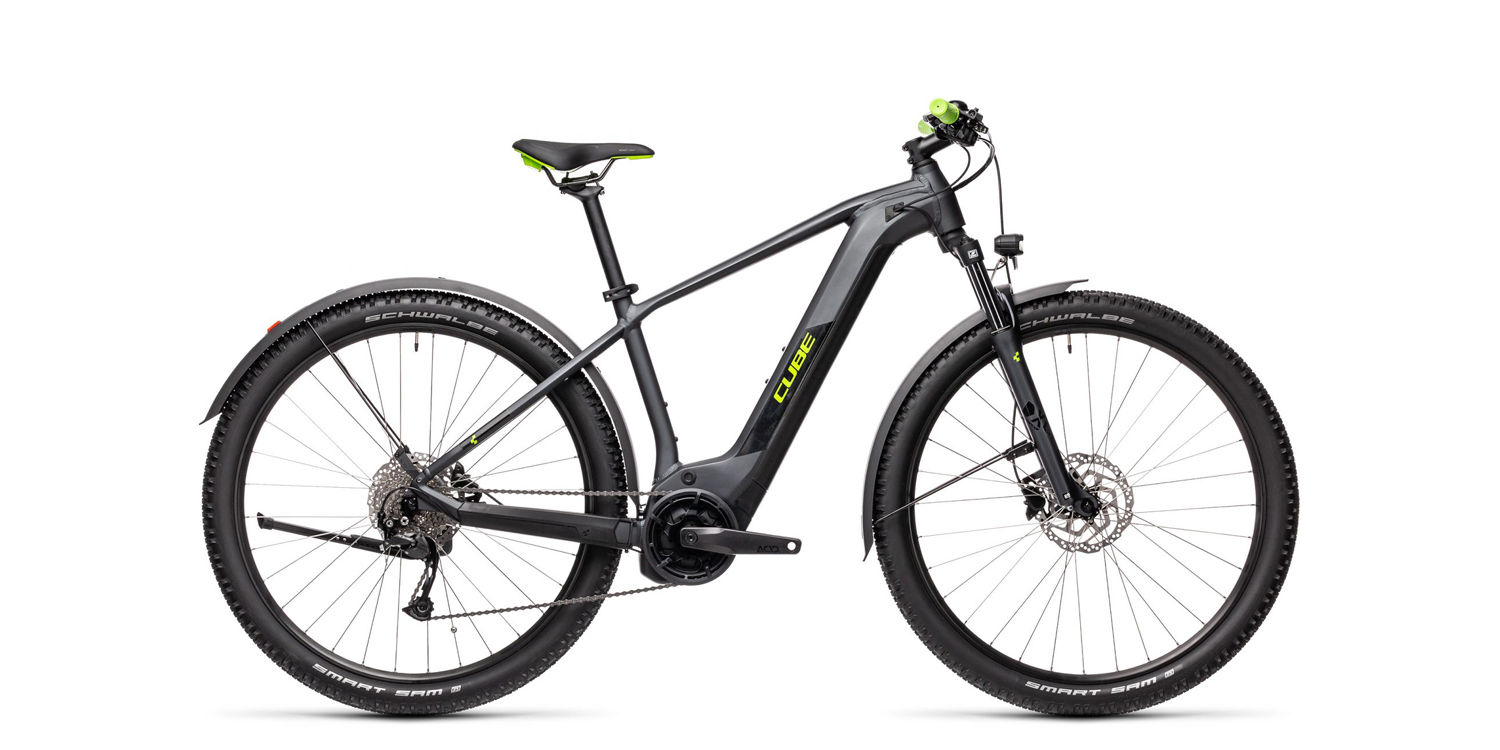
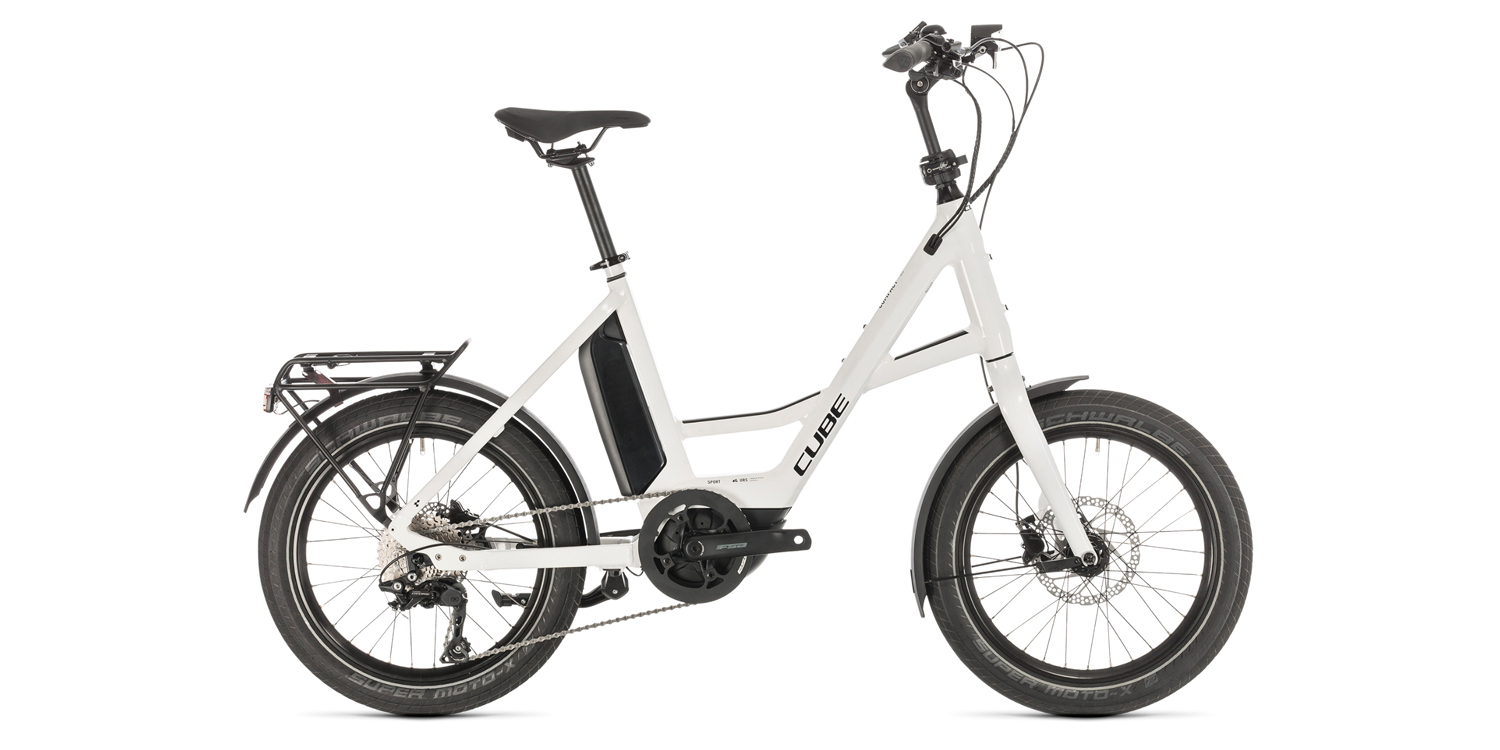
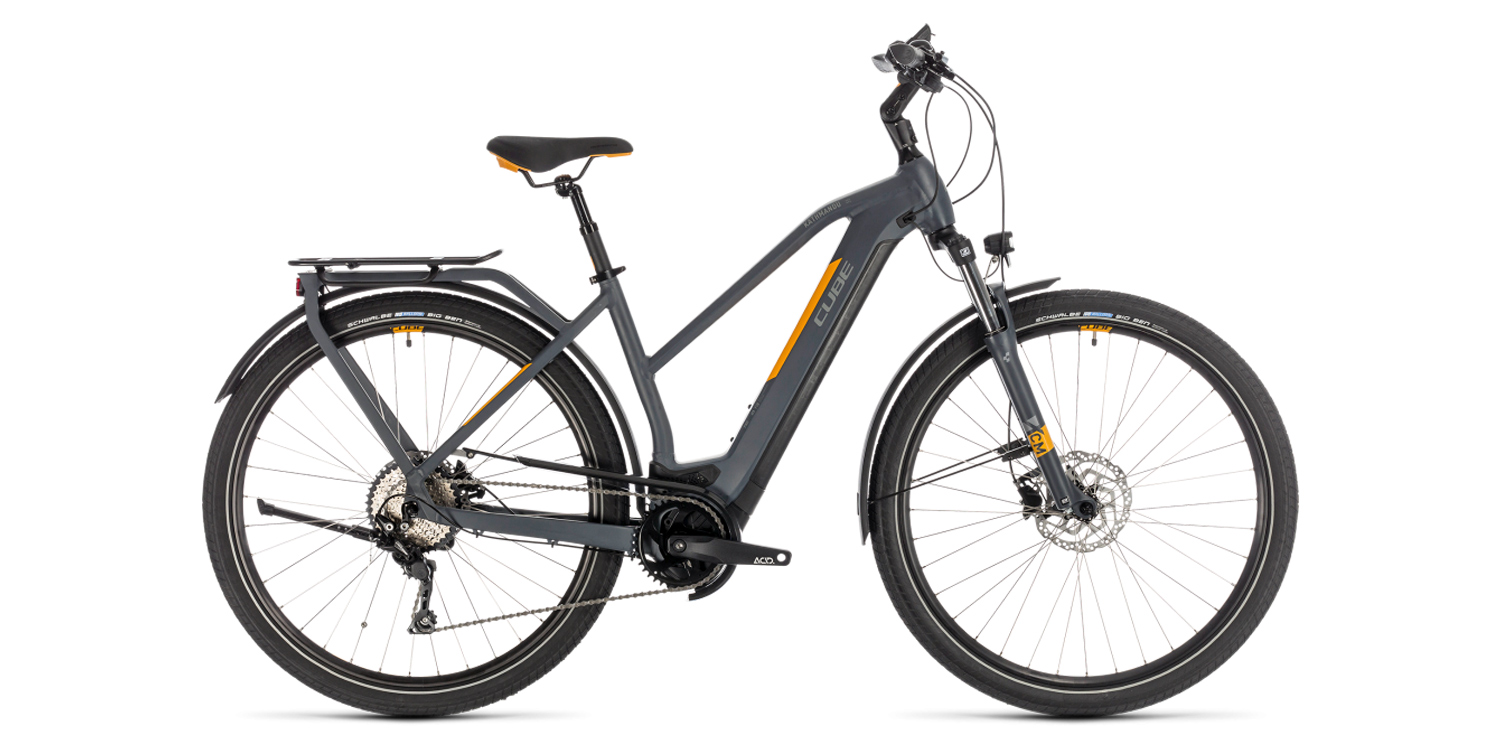
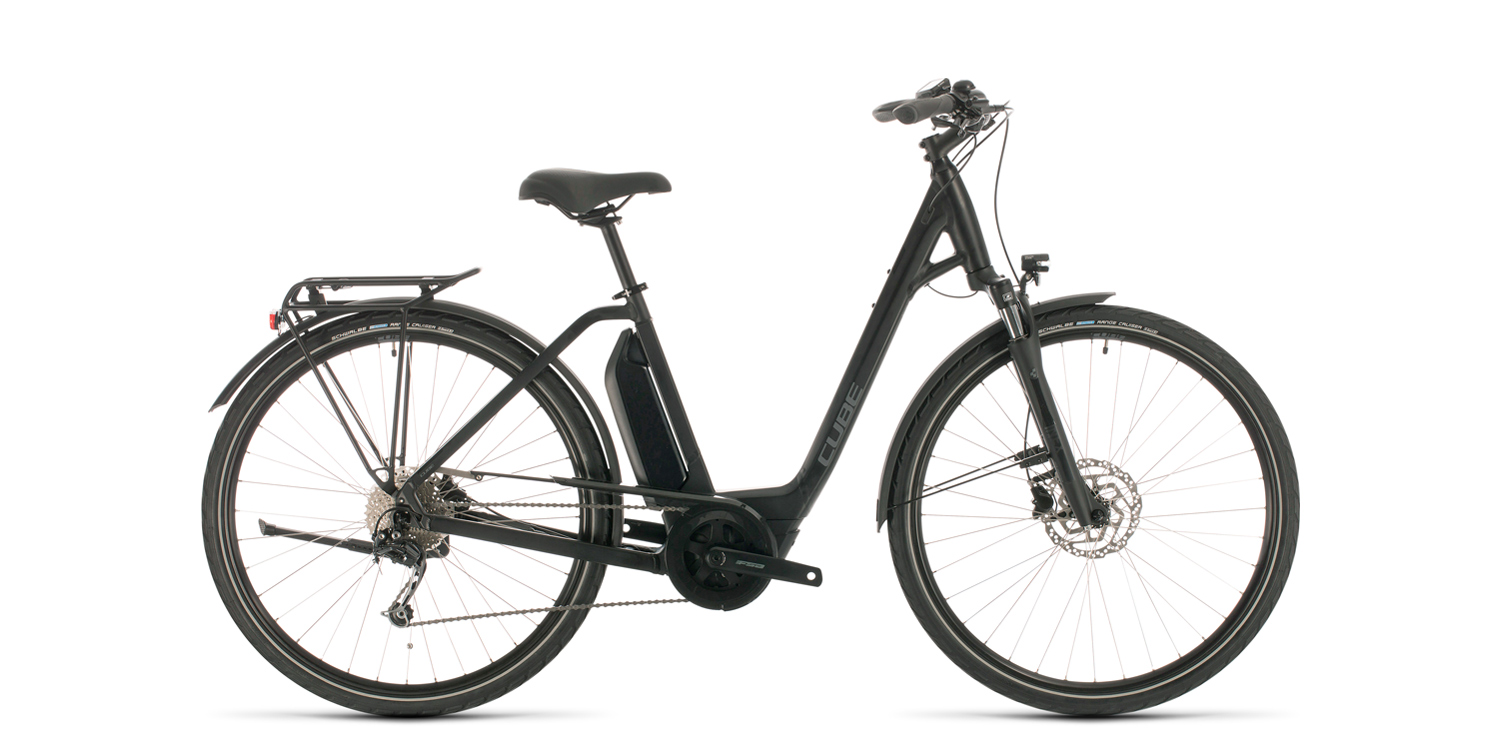
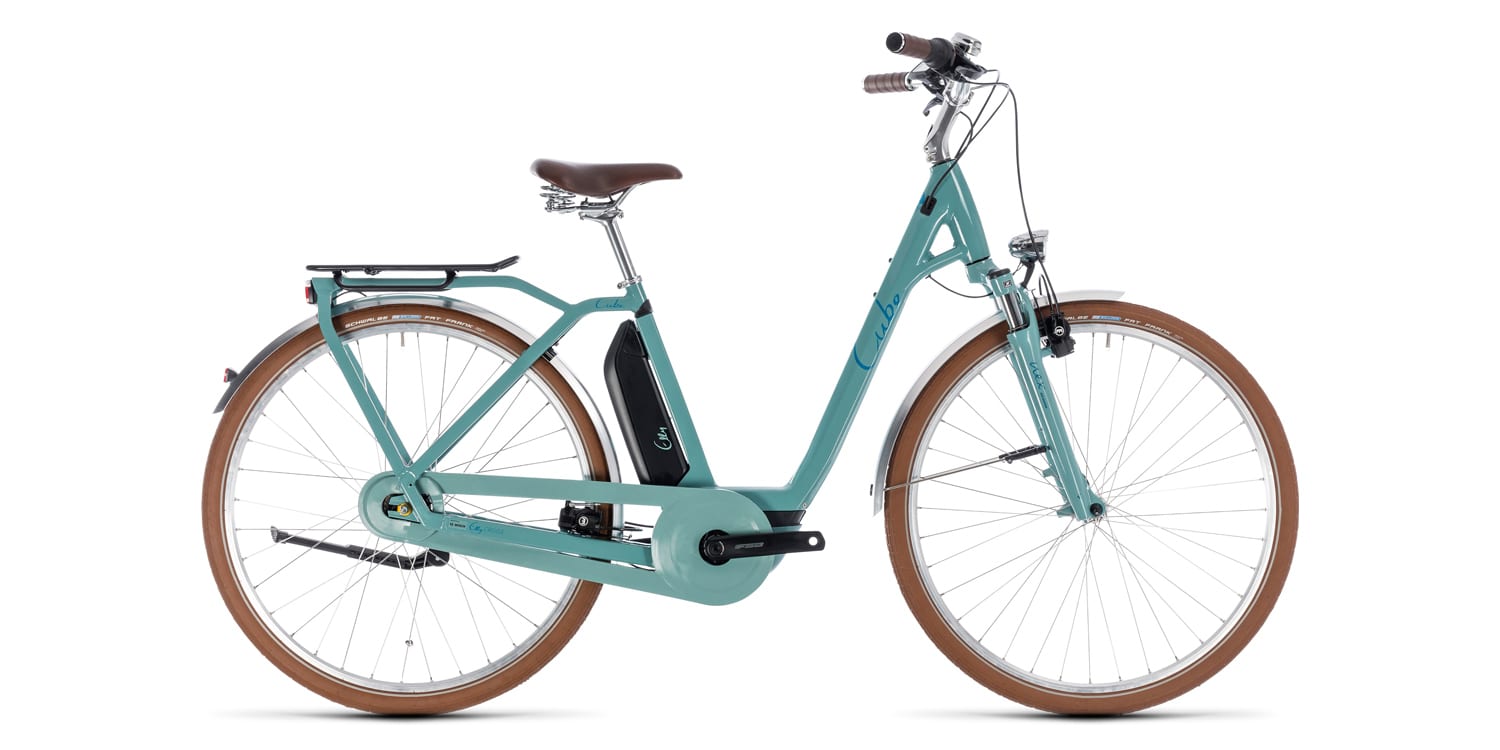
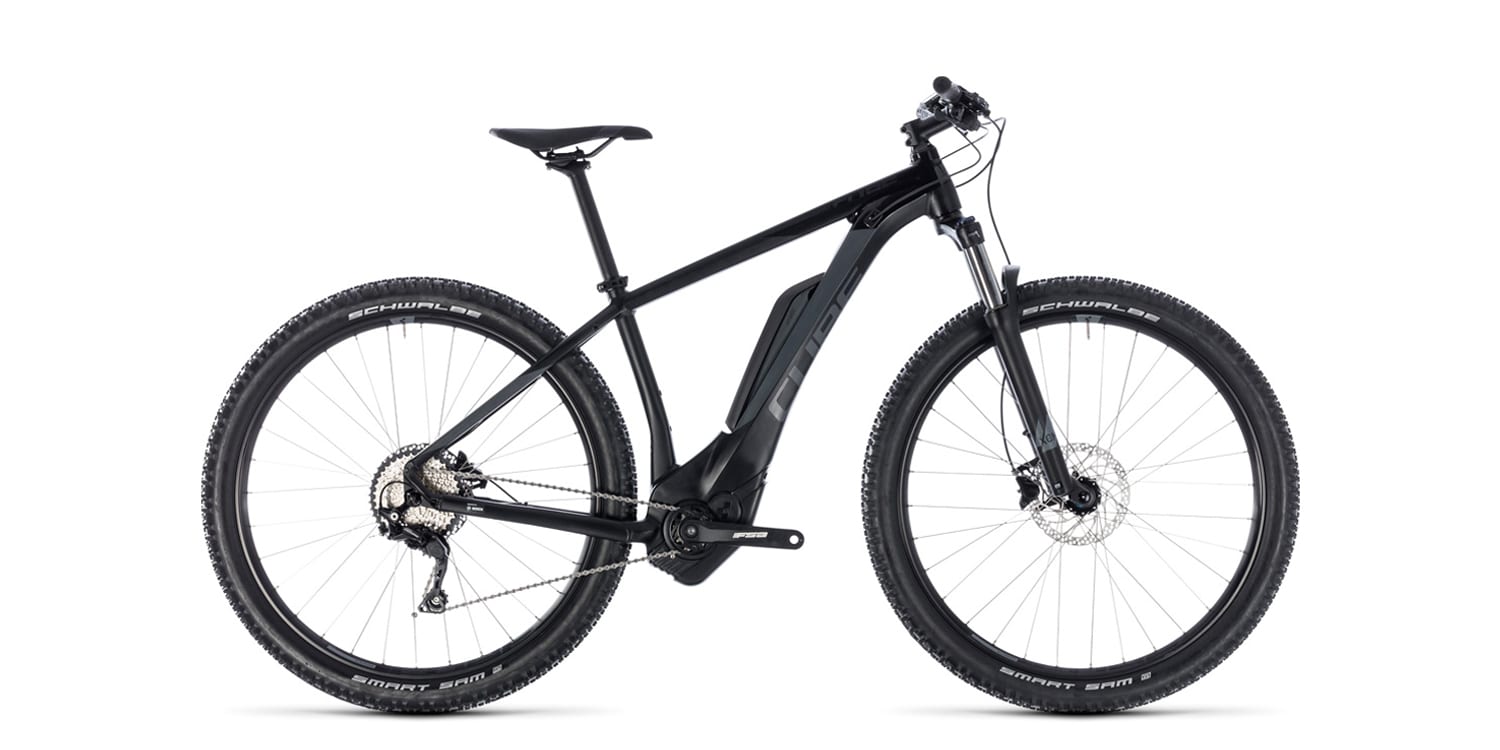
Michael Schlander says
I bought an Cube Reaction Hybrid Pro 500 in August 2020. After one month, only the frame and motor remain, the rest went to the scrub. The bike didn’t move or just like having no air in the wheels. After changing the the cassette to a lightweight Garbaruk 12sp 11-52, the chainring to Raceface T34 N/W Shimano, with alu- spider, rear derailleur to Shimano SPX, all hubs to Shimano XT (original Shimano cheapest made in China), the fork from Suntour (4+kg!!) to RockShox (1.7kg!!), and the bar to a one from carbon. The bike is now excellent in acceleration and speed and no need always to go with battery even bigger distances which helps reducing charging cycles and operation time drastically. Of course the brakes are now 1 (one!!!) finger operated from Shimano (SLX), disc in front 203, since that the bike is save on longer downhill driving. Dropper post added.
The worst of all was the head set with open bearings I last saw in the 70’s. Difficult to find ZS head set with upper outer dia. 56mm. Only Acros supported that. The wheels from Schwalbe (Smart Sam) are for a german highway but not for nature trails as the bike is designed category 3. Silver spokes, so cheap looking, never seen since 70’s neither. And the pedals, no words. The saddle is from good quality (didn’t fit to me, but that’s personal). Now, after all that modifications, I really love my bike!!! Still, after all that (of course all DIY), it was cheaper to do so than to buy one from stock equipped like mine is now.
Court says
Wow, thanks for sharing your insights here, Michael. You sound like an experienced pro. I’m younger than you (born in the mid-80’s) and never rode the expensive high performance stuff until I started reviewing ebikes. There’s a lot to learn and appreciate, I’m sorry that my specs list and observations were somewhat limited here, but I’ll keep at it. Cheers!